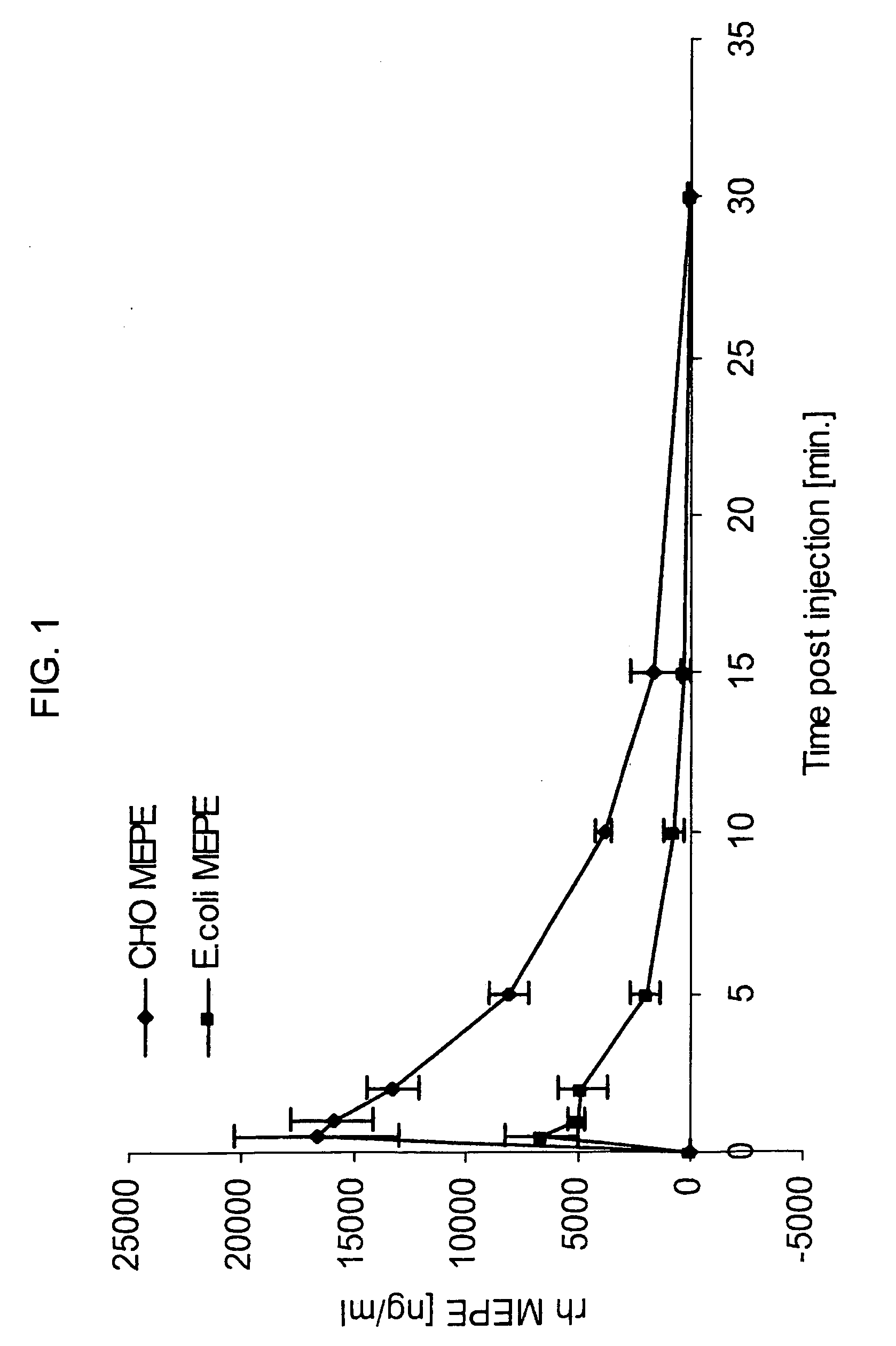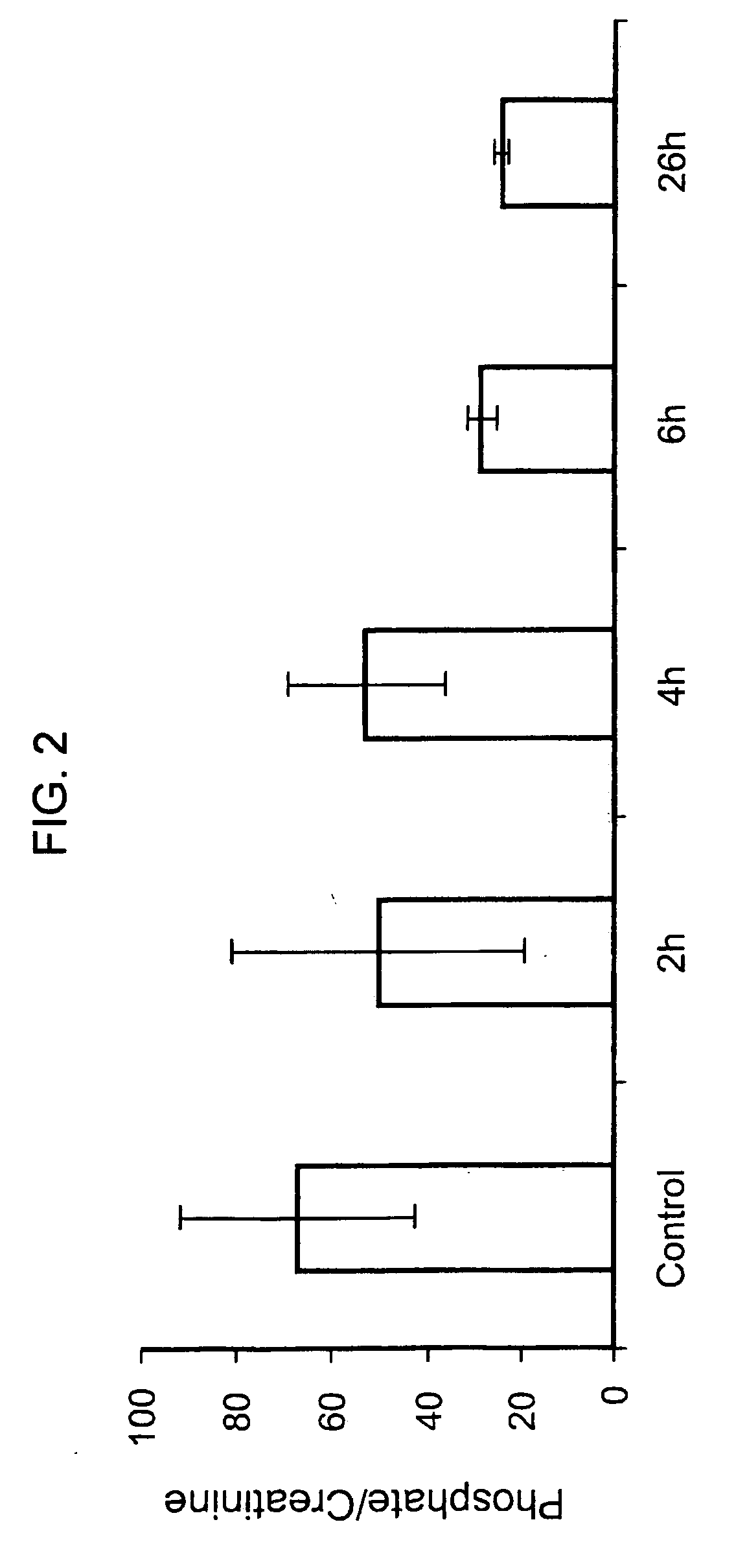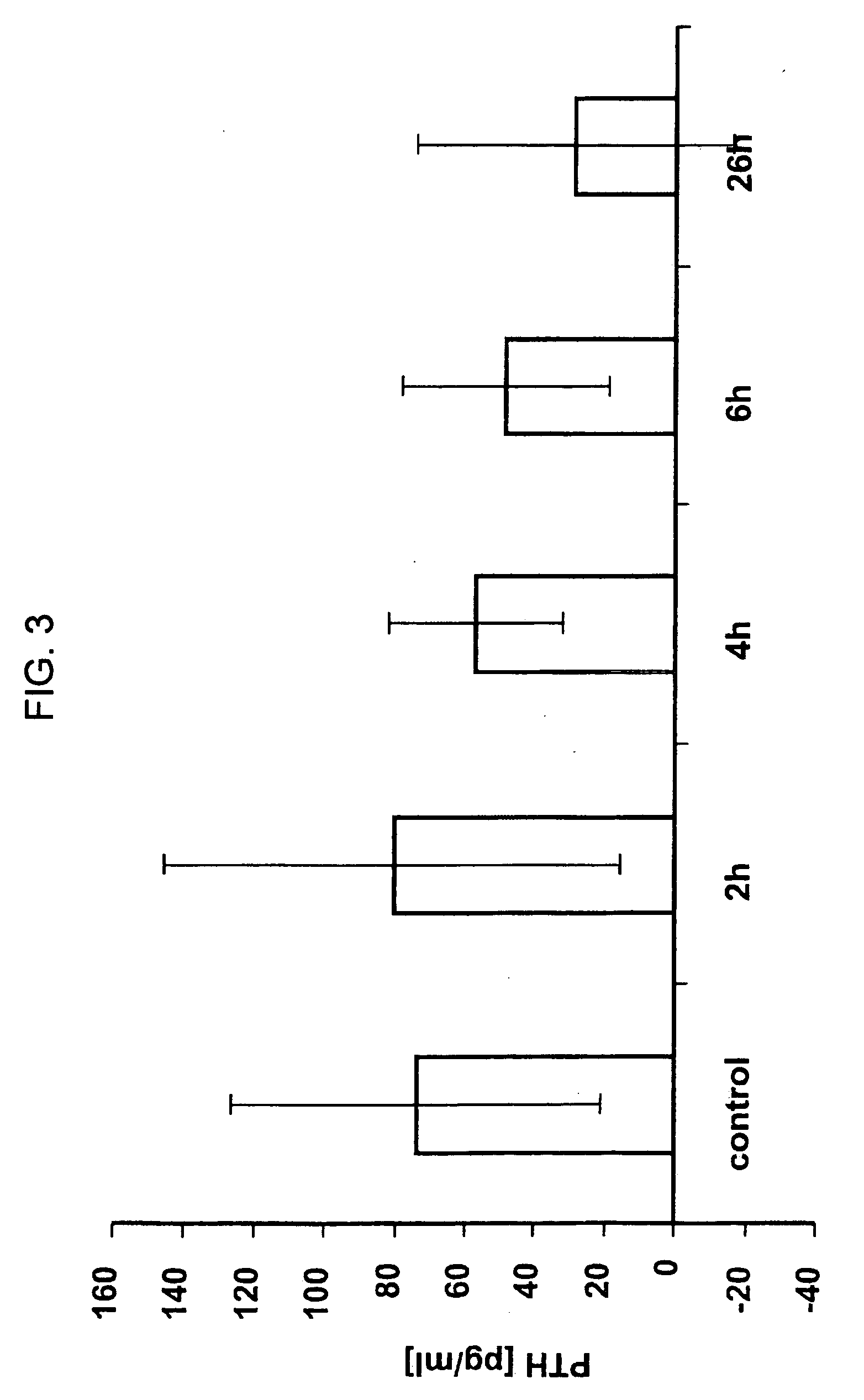Regulation of mineral and skeletal metabolism
a mineral and skeletal metabolism and metabolism technology, applied in the field of treatment, can solve the problems of comatosis or death, impairing bone remodeling, growth retardation in younger patients, etc., and achieve the effect of reducing the likelihood of the onset of a disease or disorder
- Summary
- Abstract
- Description
- Claims
- Application Information
AI Technical Summary
Benefits of technology
Problems solved by technology
Method used
Image
Examples
example 1
Pharmacokinetic Profile of rhMEPE Produced by E. coli and by CHO Cells
[0088] Sprague-Dawley rats (˜300 g) were prepared by inserting femoral and jugular catheters for drug administration and blood collection respectively. Four rats were used for each type of material. rhMEPE was diluted in saline and injected (0.5 ml) to give a target dose of 1 mg / kg. Blood collected at 0, 0.5, 1, 2, 5, 10, 15 and 30 minutes. Blood was centrifuged to collect plasma and then frozen at −80 C until assay. Plasma levels of MEPE were determined using a competitive ELISA employing a rabbit polyclonal antibody made to a synthetic fragment of MEPE. Under these conditions, the ELISA has a linear detection range of ˜10 ng / ml to 1000 ng / ml). Samples from each rat were analyzed in duplicate and MEPE levels determined from a standard curve.
[0089]FIG. 1 demonstrates that both materials have a similar half life of approximately 3.5 minutes. However, the Cmax for the E. coli material was ˜6500 ng / ml whereas the C...
example 2
Effect of rhMEPE on Plasma Levels of Phosphate and Parathyroid Hormone (PTH)
[0090] Sprague Dawley rats (˜300 g) were injected three times with 2 mg / kg of E. coli produced rhMEPE at times 0, 2 hr, and 4 hr. Blood was collected prior to injection of MEPE (time 0) and then 2 hr post the first injection (2 hr time point), 2 hr post second injection (4 hr time point), 2 hr post third injection (6 hr time point) and finally at either 24 or 26 hr as indicated. Serum was collected and analyzed for creatinine, PO4 and PTH. FIGS. 2 and 3 show the effects of rhMEPE on serum PO4 when normalized to serum creatinine and PTH, respectively.
[0091] As shown in FIGS. 2 and 3, respectively, administration of rhMEPE results in a rapid reduction in both PO4 and PTH component. In addition, the levels appear to remain depressed for at least 20 hrs following the last injection of rhMEPE.
example 3
Pharmacokinetic Profile of E. coli rhMEPE Conjugated to Polyethylene Glycol (PEG)
[0092] rhMEPE was produced using an E. coli expressing system. The MEPE protein was then modified by the addition of PEG. The average molecular weight of the material used in this study was ˜130 kD. PEG-MEPE was diluted in saline and administered IV (via femoral catheter) to rats (˜300 g) at a dose of 1 mg / kg. A total of 4 rats were used in this study. Blood was then collected at various time points up to 4 hr post injecting and analyzed for MEPE using a competitive ELISA. FIG. 4 shows the plasma concentrations of MEPE over time following a single bolus injection of PEG-MEPE. From this study, it was determined that the half life for PEGE-MEPE was approximately 10.9 hrs. This is substantial enhancement compared to non-PEG MEPE which had a half life of approximately 3 minutes. From these data, we might expect a single administration of PEG-MEPE to maintain an enhanced biological response.
PUM
| Property | Measurement | Unit |
|---|---|---|
| time | aaaaa | aaaaa |
| time | aaaaa | aaaaa |
| length | aaaaa | aaaaa |
Abstract
Description
Claims
Application Information
 Login to View More
Login to View More - R&D
- Intellectual Property
- Life Sciences
- Materials
- Tech Scout
- Unparalleled Data Quality
- Higher Quality Content
- 60% Fewer Hallucinations
Browse by: Latest US Patents, China's latest patents, Technical Efficacy Thesaurus, Application Domain, Technology Topic, Popular Technical Reports.
© 2025 PatSnap. All rights reserved.Legal|Privacy policy|Modern Slavery Act Transparency Statement|Sitemap|About US| Contact US: help@patsnap.com



